JTF (just the facts): A total of 19 color and black-and-white photographs, framed in white and unmatted (or framed in black and matted), and hung against white walls in the main gallery space and the smaller project room.
The following works are included in the show:
From the series Isolated Houses
- 6 archival pigment prints, 1995-1998, each sized 19×19 inches, in editions of 8+2AP
- 5 archival pigment prints, 1995-1998, each sized 30×30 inches, in editions of 8+2AP
From the series Dogs Chasing My Car in the Desert
- 7 gelatin silver prints, 1996-1998, each sized 15×23 inches, in editions of 5+2AP
(Installation shots below.)
Comments/Context: Part of the challenge faced by galleries representing later career artists is how to to continue to coalesce and reinforce the larger story of the artist’s work while simultaneously finding a thoughtful balance between older work and newer projects. John Divola’s last show with Yancey Richardson (in 2022, reviewed here) paired an iconic series from the 1970s with new works made in the past decade, and this new show drops back in between those chronological poles to revisit two strong projects from the late 1990s. By consciously moving back and forth, these shows are taking the long view, filling out and reinforcing the wider arc of Divola’s career and keeping different aspects of his point of view in the contemporary artistic mix.
Divola’s Isolated Houses series (made between 1995 and 1998) takes as its subject the simple box-like houses that dot the deserts of Southern California near Palm Springs and up the valleys toward and around Joshua Tree. Divola’s photographs pick out these overlooked structures and make unexpectedly lush portraits of them against the flat sweep of the dry land in the foreground and the mountain ranges and vast skies in the distance. While not always rigidly bisected like Hiroshi Sugimoto’s images of the sea from a decade earlier, Divola’s square format compositions are consistently crisply ordered, with the humble geometries of the houses played against the precise divisions of the surrounding landscape.
Many of the modest houses have been painted in light pastel colors, and Divola has taken advantage of these details to turn his images into color studies. Depending on the play of the light, the houses can alternately appear swathed in soft darkness or spotlit by relative brightness, and the planes of the buildings and rooflines can end up with more pronounced contrasts of tonality. In some cases, the colors are matched, like a pink house against the muted pink of the sunset, a white house paired with the moon in the sky, or a light blue roof disappearing into the blue of the hills and stormy skies in the distance. In others, the colors are more opposing, with sunny peach and orange houses brashly set against gloomy clouded skies, or a yellow and green house surrounded by a swirled pink and blue sky for a combined rainbow effect. Still other pictures use the washed out colors of the dirt and sand together with the lightness of falling twilight to create moods that are more subdued and understated.
Even within Divola’s compositional constraints, each house is seen as an individual, including the one dwarfed by the astonishing orange and red maelstrom of a glorious desert sunset. And while many of the houses were likely uninhabited or abandoned, Divola’s pictures seem to celebrate a sense of frontier individualism and plucky defiance of the severe environmental conditions in the surroundings. This determined (or delusional) optimism stands in contrast to the more austere and decayed black-and-white atmosphere captured by Mark Ruwedel’s photographs of similar desert houses in the mid 2000s.
Sometimes potential photographic projects present themselves in unexpected ways, and while Divola was out driving around in his car and scouting houses in the desert, he would often encounter dogs that would run out to bark at him and then chase his car down the dirt roads. As the dogs ran alongside his moving car, he used a motorized 35mm camera to make blasts of exposures out the window. His results turn the dogs into frozen black silhouettes flying through the air, their speed halted for just an instant, like Edweard Muybridge’s 19th century stop motion studies.
There is something durably magnetic about these seemingly simple pictures. As I was standing in the small gallery space, two young men who had never seen the photographs before came in and were mesmerized by what they saw, the elemental forms of the blurred dogs in motion at once vaguely comic, a bit futile (they never catch the car of course), and powerfully animal and real. Photographically, the contrasts of light and dark give the pictures undeniably boldness, and the conceptual underlayers of the man/dog chase and its meanings add richness to how we might interpret the scenes.
In the end, sampler-sized shows of well known works like these don’t necessarily increase our collective knowledge about these bodies of work nor do they significantly alter their place in the long history of photography, but what they do succeed at doing is bringing the works back to the top of our minds, where we can think about them again, reconsider them in the context of other things we have seen recently, and more generally re-evaluate what we remember about their power and significance. And for those that may not have seen the works before, there is the potential for the lightning strike moment of encountering something artistically exciting for the first time, that can open up doors that we didn’t know existed. In this way, depending on who you are, this paired show may represent a reprise of the familiar or the discovery of something new; either way, what’s clear is that these photographs have aged well, still exhibiting the freshness of concept and execution that made them intriguing decades ago.
Collector’s POV: The prints in this show are priced as follows. The Isolated Houses prints are $7300 or $11500/$13500 each, based on size, while the Dogs Chasing My Car in the Desert prints are $7300 each. Divola’s work has only been intermittently available at auction in recent years, with prices generally ranging between $1000 and $22000.
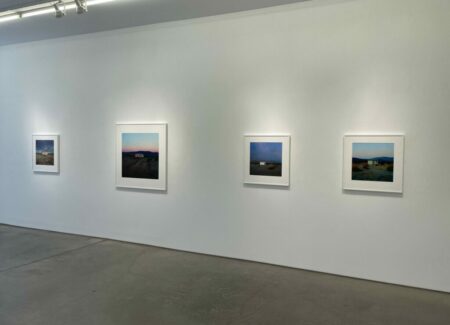
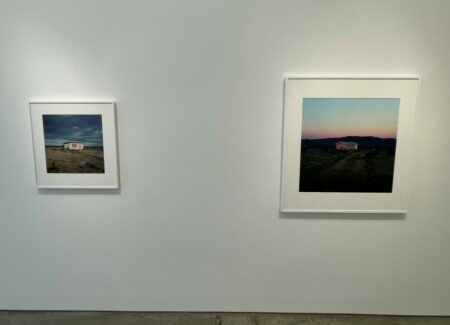
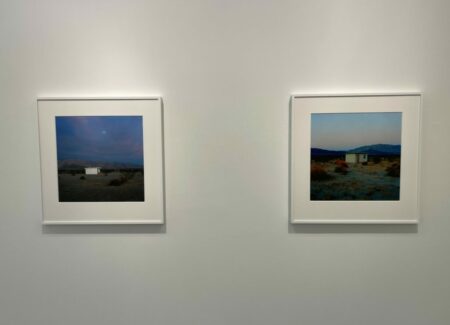
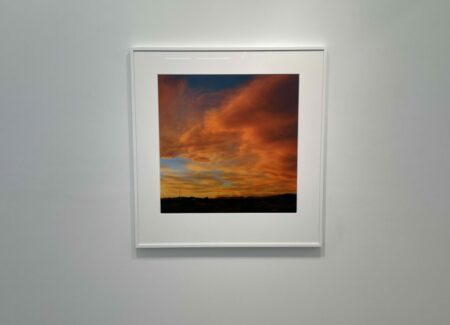
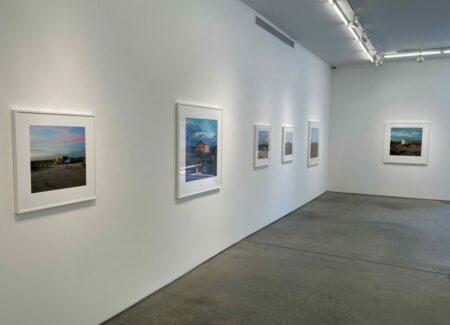
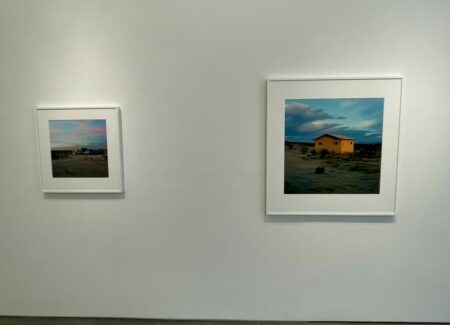
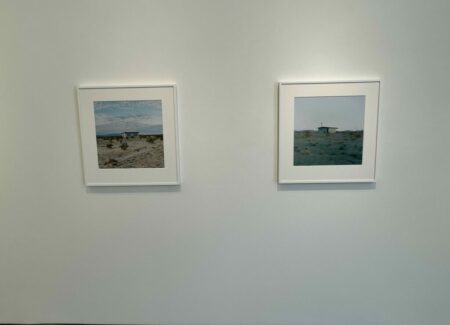
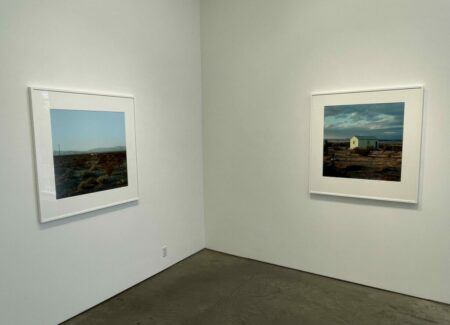
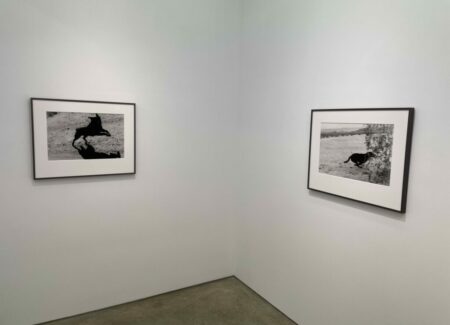
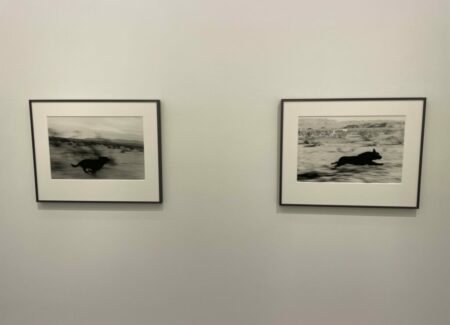
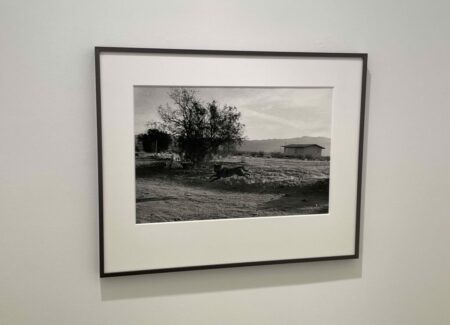
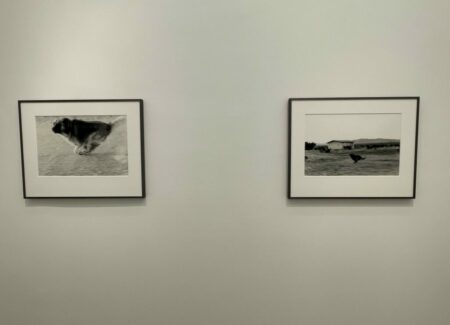




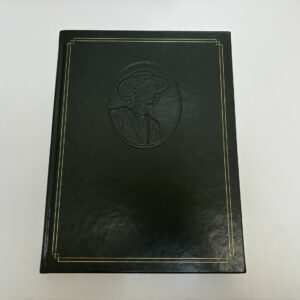
So pleasing to hear the blurry dogs photographs got a wow reaction. Divola is cruelly under-rated. Look at those prices.
I read a resident of one of those isolated houses queried why he was taking a photograph of his home, and he replied that he liked the colour. When he came by that way again a while later the house had been re-painted.